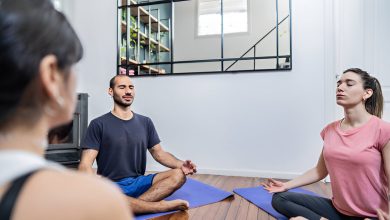Strengthen Your Recoveries: Managing and Avoiding Exercise-Related Injuries

Hi there, fellow fan of physical activity! You’ve decided to start your road towards being a running machine, a yoga expert, or a gym warrior. Hold on, what’s this? An injury from exercise attempting to spoil your plans? We have some recommendations to help you heal stronger and avoid those annoying injuries from limiting your style, so don’t worry too much—well, maybe a little.
Pay Attention to Your Body
Let’s start by discussing how important it is to pay attention to your body. Your body is like that one friend who is always aware of what’s going on but never receives the praise. Do not dismiss any unease you may get during your workout. Although it may seem extreme, trying to push through the agony can only lead to worse injuries. Thus, it could be time to change things up and give your legs a rest if your knee is screaming, “No more squats.”
Warm Up with Sincerity
Think of your muscles as drowsy cats. Without a good wake-up call, you can’t just throw them into a high-intensity workout. This is when warm-ups are useful. Take a few minutes to warm up your heart and prepare your muscles for action. Imagine it as a signal to your body saying, “Hey, we’re about to do some serious stuff, so wakey-wakey!”
Calm down, don’t give up.
After working out, treat your muscles with the same respect that you would your friends—at least, we hope not. Cool-downs are your body’s equivalent of the after-party. They keep you from feeling like a tin man after a workout by assisting in returning your heart rate to normal. Thus, spend a few minutes stretching and giving your muscles some TLC. They merit it.
Transform Like a Pro
In addition to being the flavor of life, variety is also the key to avoiding injuries. Your body will revolt if you consistently perform the same activities day in and day out. Change things up by introducing various workouts into your regimen. It will not only keep things interesting, but it will allow some muscles to relax while others become the main attraction.
Buttercup, get ready.
Though they may hold sentimental value, those worn-out, tattered sneakers aren’t doing anything for your feet. Invest in the right equipment to support your body and lower your chance of injury. Who doesn’t love an opportunity to go shopping for some stylish new athletic wear, after all?
Unwind Like an Expert
Rest is not a four-letter word. Say it with me. It’s the unsung hero of any fitness expedition. Don’t be afraid to plan some rest days following a strenuous workout because your body needs time to recuperate and rebuild. Consider it as pausing so that you may return much more powerfully.
Seek Expert Assistance (But Not That Kind)
Don’t try to save the day if an injury does keep you from playing. Seek the assistance of a trained specialist who can help you navigate the healing process. Never be afraid to ask for assistance from a qualified trainer, sports medicine physician, or physical therapist. Your body will be appreciative.
And that’s it for now, people. You can prevent exercise-related injuries and heal more effectively with a little common sense mixed with humor. Go forth now and tackle the running trail, the yoga studio, or the gym. Your physical form is prepared.
The comprehensive manual “Recover Stronger:
Dealing with and Preventing Exercise-Related Injuries” is designed to assist people in overcoming the difficulties associated with exercise-related injuries. It includes several topics, such as knowledge of typical injuries, recuperation techniques, and ways to avoid injuries. An overview of the contents of such a guide would be as follows:
1)Recognizing Injuries Associated with Exercise:
.explanation of typical injuries from exercise, including stress fractures, tendonitis, sprains, and strains.
.Talk about the factors that contribute to these injuries, such as misuse, bad form, insufficient warm-up, and inadequate recuperation.
2)Recuperation Techniques:
Rest and recuperation: The significance of letting the body repair and renew itself.
.Exercises designed specifically to strengthen and speed up recuperation are called rehabilitation exercises.
. Physical therapy and professional support: When to contact medical professionals like sports medicine specialists or physiotherapists for assistance.
3)Food and Drinks:
.The part nutrition plays in promoting healing and preventing injuries.
.Hydration is essential for general health and tissue repair.
4)Strategies for Preventing Injuries:
.appropriate cool-down and warm-up protocols.
. Exercises for flexibility and stretching are essential.
. gradual increase in volume and intensity of exercise.
. Cross-training to avoid injuries from excessive use.
. wearing the proper footwear and gear.
5)Paying Attention to Your Body:
Identifying potential injury warning indicators.
.Recognizing when to take a break and when to endure discomfort.
. Keep an eye out for adjustments in performance or biomechanics that could point to an approaching injury.
6)Injury and Mental Health:
Coping mechanisms to address the psychological and emotional effects of an injury.
. sustaining optimism and drive throughout the healing process.
. locating substitute activities to keep busy and involved while recovering from an injury.
7)Prevention of Long-Term Injury:
.laying a strong foundation for mobility and strength.
.including consistent recuperation techniques like massages, foam rolling, and getting enough sleep.
. Obtaining expert advice for remedial exercises and biomechanical evaluations.
8)Resuming Safety in Exercise:
Recommendations for easing back into activities after an injury.


